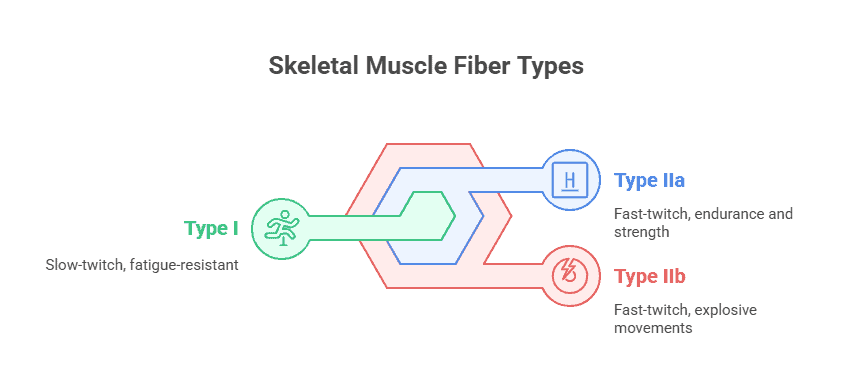When we think about the muscular system, we often picture the muscles that help us move and perform daily activities. However, the muscles in our body are not all the same. Within skeletal muscles, there are different types of muscle fibers that play specific roles in how our muscles function. Understanding these muscle fiber types is crucial for understanding how our muscles work and how we can train them effectively.
Types of Muscle Fibers
There are generally two main types of skeletal muscle fibers: slow-twitch (Type I) fibers and fast-twitch (Type II) fibers. These muscle fibers differ in their contraction speed, force production, and energy requirements.
Slow-Twitch (Type I) Fibers
Slow-twitch fibers are characterized by their ability to sustain low-intensity contractions for long periods of time. These fibers have a high resistance to fatigue and are well-suited for endurance activities such as long-distance running or cycling. Slow-twitch fibers rely primarily on aerobic metabolism for energy production, making them efficient at utilizing oxygen to generate ATP.
Fast-Twitch (Type II) Fibers
Fast-twitch fibers, on the other hand, contract quickly and produce high levels of force. These fibers are important for activities that require short bursts of power, such as sprinting or weightlifting. Fast-twitch fibers rely more on anaerobic metabolism for energy production, which means they can generate energy quickly but fatigue faster than slow-twitch fibers.
Hybrid Muscle Fibers
In addition to slow-twitch and fast-twitch fibers, there are also hybrid muscle fibers that possess characteristics of both types. These hybrid fibers can adapt to different types of training and activities, making them versatile in their function.
Training Implications
Understanding the different muscle fiber types is essential for designing effective training programs. Endurance training, such as long-distance running, can help improve the function of slow-twitch fibers, while strength training, such as weightlifting, can target fast-twitch fibers. Incorporating a variety of training modalities can help individuals develop a well-rounded muscular system.
Summary
In summary, skeletal muscle fibers can be categorized into slow-twitch (Type I) fibers, fast-twitch (Type II) fibers, and hybrid fibers. Each type of muscle fiber has unique characteristics that influence how our muscles perform during different types of activities. Understanding these muscle fiber types is crucial for designing effective training programs and optimizing muscular function.
Key Takeaways:
- There are three main types of skeletal muscle fibers: Type I, Type IIa, and Type IIb.
- Type I fibers are slow-twitch fibers that are resistant to fatigue and are used for endurance activities.
- Type IIa fibers are fast-twitch fibers that are used for activities that require both endurance and strength.
- Type IIb fibers are fast-twitch fibers that are used for short, explosive movements.
- Individuals have a mix of all three types of muscle fibers, but the proportion of each type can vary depending on genetics and training.
- Training can influence the proportion of muscle fiber types in the body, with endurance training increasing Type I fibers and strength training increasing Type II fibers.
- Understanding muscle fiber types can help tailor training programs to achieve specific fitness goals.
Key Terms:
- Skeletal Muscle Fiber Types: Different types of muscle fibers found in skeletal muscle tissue that vary in contraction speed, force production, and fatigue resistance.
- Slow-Twitch (Type I) Fibers: Muscle fibers that contract slowly but are highly resistant to fatigue, making them ideal for endurance activities.
- Fast-Twitch (Type II) Fibers: Muscle fibers that contract quickly and generate a lot of force, but fatigue more quickly than slow-twitch fibers.
- Type IIA Fibers: Intermediate muscle fibers that combine some characteristics of both slow-twitch and fast-twitch fibers.
- Type IIB Fibers: Fast-twitch muscle fibers that generate high force output but fatigue rapidly.
- Size Principle: The principle stating that motor units are recruited in order of size, with smaller motor units being recruited first for low-intensity tasks and larger motor units being recruited for high-intensity tasks.
